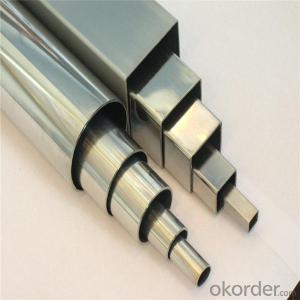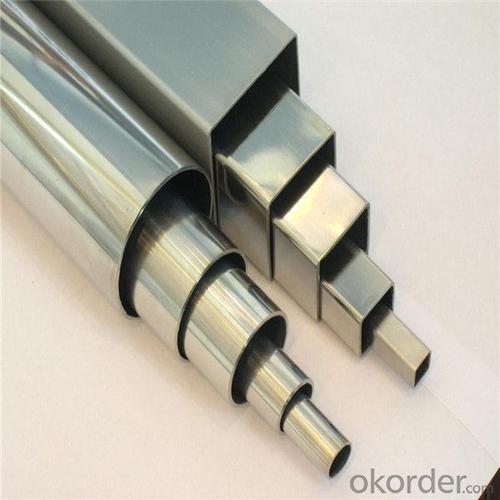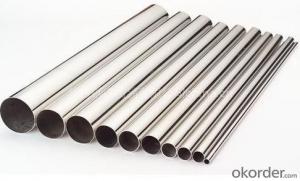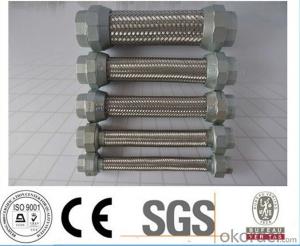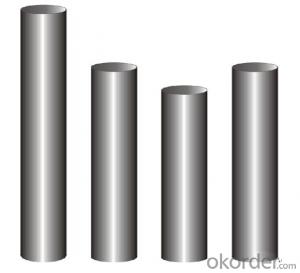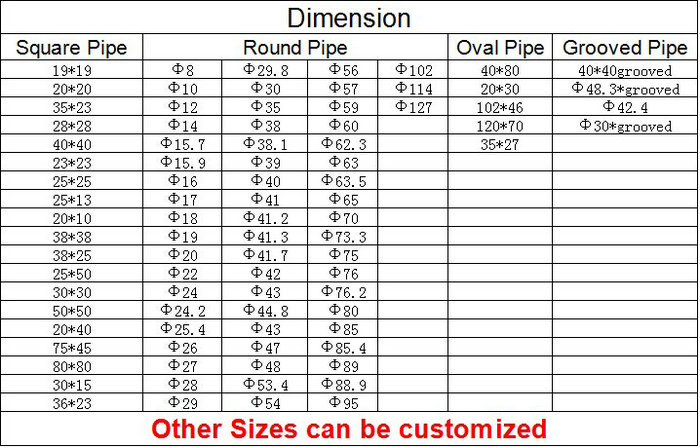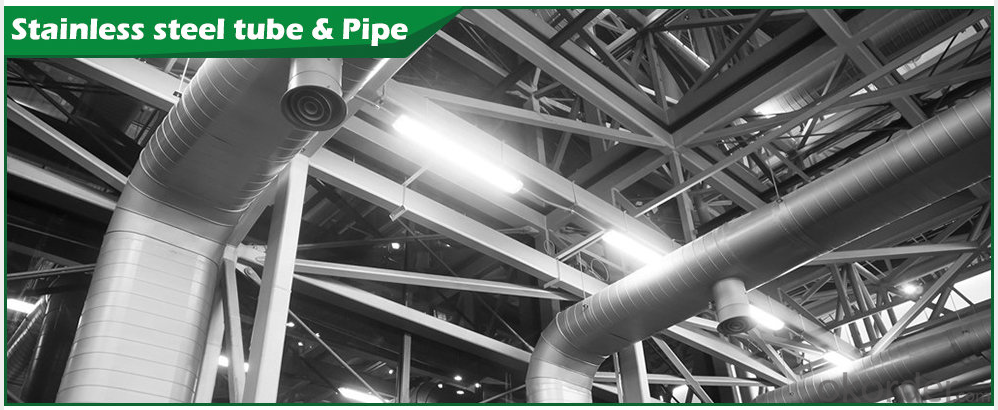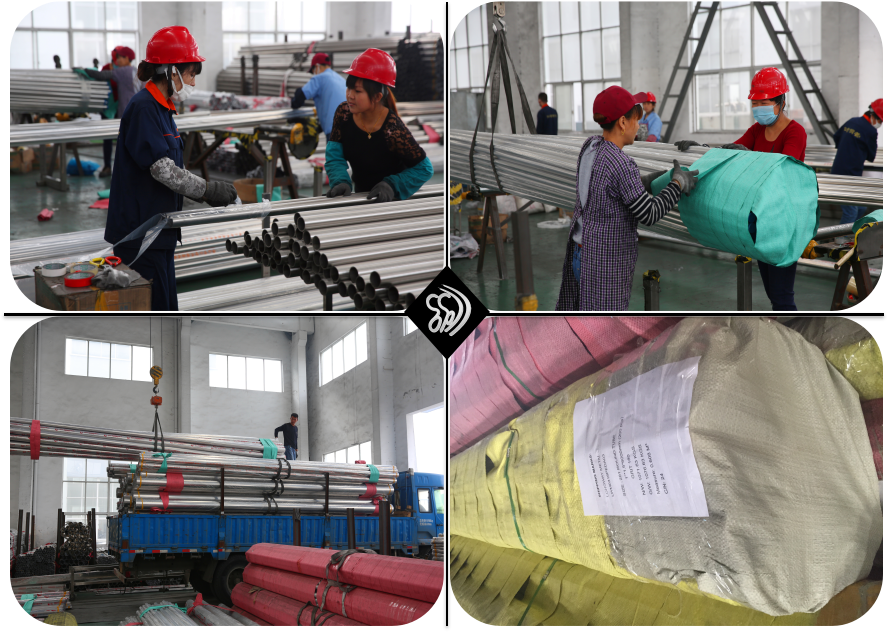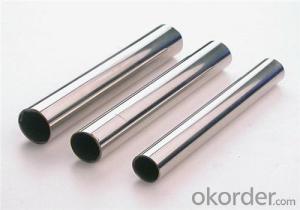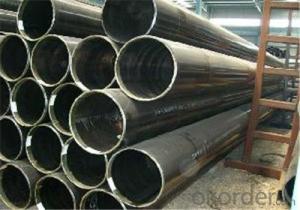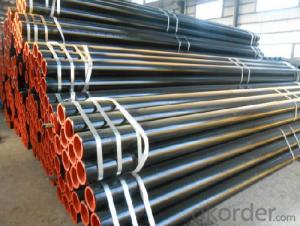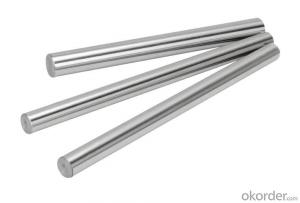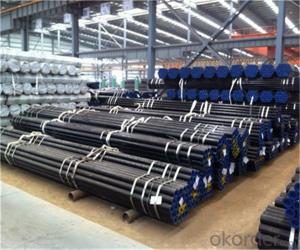304 Stainless Steel Seamless Pipe Manufacturer
- Loading Port:
- Shanghai
- Payment Terms:
- TT OR LC
- Min Order Qty:
- 1 m.t.
- Supply Capability:
- 25000 m.t./month
OKorder Service Pledge
OKorder Financial Service
You Might Also Like
Specification
316 stainless steel pipe
Product Details | |
♦ Introduction | |
Stainless steel pipes, used outside, inside for decoration, construction, grade 201 202 301 304 | |
♦ Specifications | |
Round pipes - Outside diameter(mm) | |
8, 9.5, 11, 12, 12.7, 14.5, 15.9, 17, 18, 19, 20, 22, 23, 28, 29, 31.8 , 35, 36, 38, 45, 47, 48, 50.8, 60, 63, 76, 88.9, 102, 114, 133, 141, 159, 219 | |
Square pipes - Outside dimensions(mm) | |
10x10, 12x12, 15x15, 17x17, 18x18, 19x19, 20x20, 22x22, 23x23, 24x24, 25x25, 28x28, 30x30, 36x36, 38x38, 40x40, 48x48, 50x50, 60x60, 70x70, 80x80 | |
Rectangular pipes - Outside dimensions(mm) | |
20x10, 23x11, 24x12, 25x13, 28x13, 30x15, 34x22, 36x23, 37x24, 38x25, 40x20, 48x23, 50x15, 50x25, 60x15, 60x30, 73x43, 75x45, 95x45 | |
Wall Thickness | 0.3 - 3.0mm |
Length | 6m (or according to customers' requests) |
Polishing | 600#, 400#, 320#, 240#, 180#.etc. |
Tolerance | 1. Outer diameter: ±0.15mm 2. Thickness: ±10% of wall thickness |
Customized | Other size can be manufactured according to requirements |
Standard | Strictly follow the ASTM A 554 and others. |
Feature | |
1. Material of stainless steel: Grade: AISI 201, 202, 301,304, 304L, 316, 441, 409, 439M, 321, 430, 436L, etc. construction upholstery, and industry instruments (fencing, railing,safe doors / windows, gate fittings, inside staircases, balcony balustrades,furniture, sanitary wares, kitchen wares) | |
Implementation of Standards | |
1. GB in China; | |
Surface Type Processing | |
1. Surface polishing SB500#; | |
Products Show | |
| |
Mechanical Properties: MaterialY.S(N/MM2)T.S(N/MM2)ElongationHRB304>205>520>40<95304l>175>480>40<90316>205>520>40<90316l>175>480>40<90430>205>450>22<89
Applications: SurfaceApplication2BMedical equipment, Food industry, Construction material, Kitchen utensils.BAKitchen utensils, Electric equipment, Building construction.No.1Chemical tank, pipe.No.4Kitchen utensils, Building construction,Medical equipment.HLBuilding Construction.
|
| ---Packing & Transport--- Packing
Transport
|
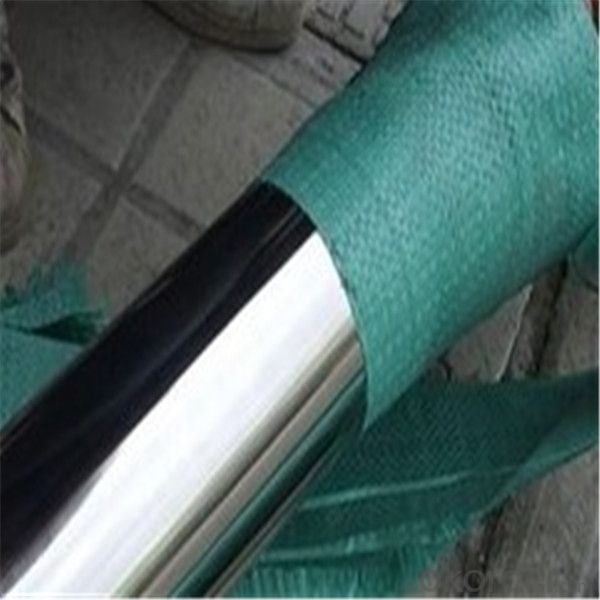
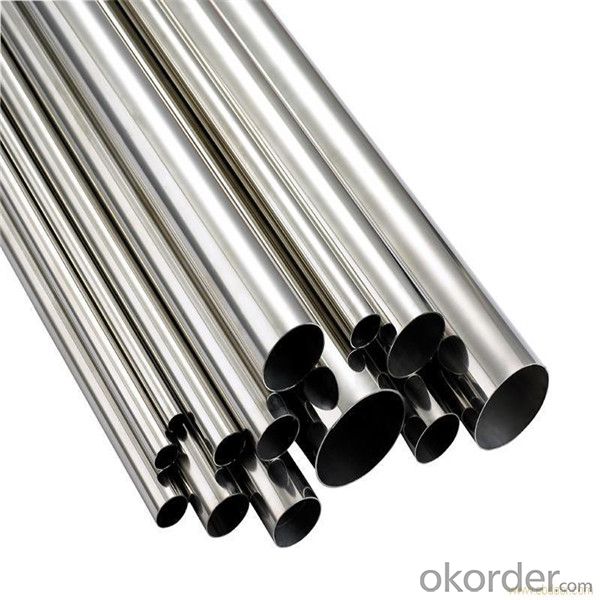
- Q: Can stainless steel pipes be used in power plants?
- Indeed, power plants can utilize stainless steel pipes. Thanks to its remarkable resistance to corrosion, stainless steel proves to be an ideal material for a wide range of power plant applications, especially when dealing with high temperatures, pressures, and corrosive surroundings. In power plants, stainless steel pipes serve the purpose of fluid transportation, including water, steam, and chemicals. Additionally, they find their place in several components like heat exchangers, boilers, condensers, and turbines. The dependability, robustness, and corrosion resistance of stainless steel make it an undeniable and trustworthy option for power plant endeavors.
- Q: What is stainless steel pipe?
- Stainless steel pipe is a type of pipe made from an alloy of steel and chromium, which provides excellent resistance to corrosion and oxidation. It is commonly used in various industries, including construction, automotive, and manufacturing, due to its durability, strength, and aesthetic appeal. Stainless steel pipes are known for their ability to withstand high temperatures and pressure, making them suitable for applications that involve transporting fluids and gases. Additionally, they are available in various sizes, shapes, and grades to meet specific requirements. Whether in residential or industrial settings, stainless steel pipes are widely used for plumbing, water supply systems, HVAC systems, and many other applications where durability and corrosion resistance are essential.
- Q: What is the difference between annealed and pickled stainless steel pipes?
- Annealed stainless steel pipes are heat-treated to remove internal stresses, making them softer and more malleable. This process improves their machinability and allows for easier forming and welding. On the other hand, pickled stainless steel pipes undergo a chemical treatment (usually with an acid solution) to remove surface impurities and oxide layers. This process enhances the corrosion resistance of the pipes and provides a smooth, clean surface finish.
- Q: Can stainless steel pipes be used for food storage tanks?
- Indeed, food storage tanks can utilize stainless steel pipes. Stainless steel is highly favored as a material for food storage and processing equipment due to its exceptional resistance to corrosion, its long-lasting nature, and its hygienic characteristics. Notably, it remains non-reactive, preventing the release of any hazardous substances into the food, and can endure both high temperatures and strenuous cleaning procedures. Moreover, stainless steel pipes can be effortlessly cleaned and sanitized, thus guaranteeing the adherence to proper food safety standards. Consequently, stainless steel pipes are frequently employed in the construction of food storage tanks to uphold the safety and excellence of the stored food products.
- Q: What are the common standards for stainless steel pipes?
- Stainless steel pipes have varying common standards depending on the specific application and industry in which they are used. However, there are several widely recognized standards that are commonly employed in the manufacturing and specification of these pipes. One of the most extensively used standards is ASTM International, which is responsible for establishing standards for various materials, including stainless steel. ASTM A312/A312M serves as the standard specification for austenitic stainless steel pipes that are seamless, welded, and heavily cold worked. This comprehensive standard encompasses a wide range of pipe sizes and grades, including TP304, TP316, TP321, and more. Another standard frequently referenced is the American National Standards Institute (ANSI) standards. ANSI B36.19 specifically delineates the dimensions, tolerances, and materials for stainless steel pipes. This standard covers both seamless and welded stainless steel pipes, offering a multitude of sizes and schedules. Apart from these standards, there are also industry-specific standards. For instance, the American Petroleum Institute (API) has established standards like API 5L, which are specifically designed for line pipes used in the oil and gas industry. These standards outline the requirements for materials, dimensions, and testing of stainless steel pipes utilized in specific applications. Other standards organizations, including the International Organization for Standardization (ISO) and the European Committee for Standardization (EN), also contribute their own standards for stainless steel pipes. ISO 1127, for instance, specifies the dimensions and tolerances for stainless steel pipes used for general purposes. It is important to acknowledge that these standards are continuously updated and revised to align with technological advancements and industry requirements. Therefore, it is crucial to refer to the latest versions of these standards to ensure compliance and maintain the quality of stainless steel pipe manufacturing and usage.
- Q: How do you prevent vibration in stainless steel pipes?
- There are several measures that can be taken to prevent vibration in stainless steel pipes. 1. Use proper pipe supports: The selection and installation of appropriate pipe supports are crucial in preventing vibration. Ensure that the supports are designed to provide adequate stability and rigidity to the pipe system. This will help to minimize any potential movement or vibration. 2. Dampen vibrations with isolators: Install vibration isolators at strategic points along the pipe system. These isolators are designed to absorb and dampen vibrations, thereby reducing the transmission of vibrations through the stainless steel pipes. 3. Proper pipe alignment: Ensure that the pipes are properly aligned during installation. Misalignment can lead to stress concentrations and increased vibration. Proper alignment will help to distribute the forces evenly and reduce vibration. 4. Reduce fluid velocity: High fluid velocities can cause turbulence and induce vibrations in the pipe system. By reducing the fluid velocity through the pipes, you can minimize the occurrence of vibrations. This can be achieved by adjusting the flow rate or by using flow control devices such as throttling valves. 5. Soundproofing measures: In some cases, vibrations can be caused by external factors such as nearby machinery or equipment. Implement soundproofing measures to reduce the noise and vibrations generated by these sources. This can include using noise-absorbing materials or installing barriers to block or redirect the vibrations. 6. Regular maintenance and inspection: Regularly inspect the pipe system for any signs of vibration or wear. Address any issues promptly to prevent further vibration problems. Additionally, ensure that the pipe system is properly maintained, including regular cleaning and lubrication of any moving parts. By implementing these measures, you can effectively prevent vibration in stainless steel pipes, ensuring the overall stability and integrity of the pipe system.
- Q: What is the difference between seamless and seamless stainless steel pipes?
- The difference between seamless and seamless stainless steel pipes lies in the manufacturing process and the composition of the material used. Seamless pipes are manufactured by extruding a solid billet through a piercing rod to create a hollow tube. This process eliminates the need for any welds or joints, resulting in a continuous and smooth pipe with no weak points. Seamless pipes are known for their strength, durability, and ability to withstand high-pressure and high-temperature applications. They are commonly used in industries such as oil and gas, petrochemical, and power generation. On the other hand, seamless stainless steel pipes are a specific type of seamless pipe that is made from stainless steel. Stainless steel is an alloy that contains a high percentage of chromium, which provides excellent corrosion resistance and high-temperature strength. This makes seamless stainless steel pipes suitable for applications where resistance to corrosion, oxidation, and heat is crucial, such as in the food and beverage, pharmaceutical, and chemical industries. In summary, while both seamless and seamless stainless steel pipes are manufactured through a seamless process, the difference lies in the material used. Seamless stainless steel pipes offer the added benefits of corrosion resistance and high-temperature strength due to their stainless steel composition.
- Q: Can stainless steel pipes be used for food processing?
- Yes, stainless steel pipes can be used for food processing. Stainless steel is a popular choice in the food industry due to its excellent corrosion resistance, high strength, and hygiene properties. It is non-reactive, which means it does not interact with food and does not impart any taste or odor. Stainless steel pipes are easy to clean, sanitize, and maintain, making them suitable for use in food processing applications where cleanliness and hygiene are crucial. Additionally, stainless steel pipes can withstand high temperatures and pressures, making them ideal for various food processing operations such as transportation, storage, and distribution of food products.
- Q: What is the maximum diameter for a stainless steel pipe?
- The maximum diameter of a stainless steel pipe can differ based on different factors including the manufacturing process, grade of stainless steel, and intended use. Nevertheless, in general, stainless steel pipes can be produced in a diverse range of diameters to accommodate various industrial and commercial requirements. The maximum diameter can span from a few millimeters for precise, small pipes utilized in industries like medical and instrumentation, to several meters for extensive pipes used in applications like oil and gas pipelines or industrial infrastructure. It is advisable to seek guidance from a reliable manufacturer or supplier to ascertain the particular maximum diameter offered for the desired stainless steel pipe.
- Q: Can stainless steel pipes be used for hydroelectric power plants?
- Yes, stainless steel pipes can be used for hydroelectric power plants. Stainless steel is a popular choice for various industrial applications due to its excellent corrosion resistance properties. In a hydroelectric power plant, water is used to generate electricity by passing through turbines. This water can often be corrosive due to its composition and flow rate. Stainless steel pipes are highly resistant to corrosion, making them an ideal choice for conveying the water in hydroelectric power plants. Additionally, stainless steel pipes offer other benefits such as high strength, durability, and the ability to withstand high pressures and temperatures. These properties are crucial for the efficient and reliable operation of the power plant. Stainless steel pipes also maintain their structural integrity over time, reducing the need for frequent maintenance and replacement. Moreover, stainless steel pipes can handle the internal and external pressures created during the power generation process. They can withstand the high-speed flow of water and resist erosion caused by sediment and debris in the water supply. This ensures the longevity and efficiency of the hydroelectric power plant. In summary, stainless steel pipes are an excellent choice for hydroelectric power plants due to their corrosion resistance, strength, durability, and ability to withstand high pressures and temperatures.
Send your message to us
304 Stainless Steel Seamless Pipe Manufacturer
- Loading Port:
- Shanghai
- Payment Terms:
- TT OR LC
- Min Order Qty:
- 1 m.t.
- Supply Capability:
- 25000 m.t./month
OKorder Service Pledge
OKorder Financial Service
Similar products
Hot products
Hot Searches
Related keywords
